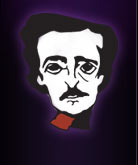MWA #2 — Dramatic Structure and Plot
 Continuing my recap of seminars from the Mystery Writers of America University in Denver. Again, these pointers will be relevant for all types of fiction, not only mystery.
Continuing my recap of seminars from the Mystery Writers of America University in Denver. Again, these pointers will be relevant for all types of fiction, not only mystery.
Our second speaker was Stanley Trollip, who is half of the writing duo known as Michael Stanley. His topic: Dramatic Structure and Plot. And again, even though I’m not a plotter, there was plenty of meat in his presentation.
A writer should have two main goals for writing a book:
1. The reader wants to turn the page (and he stressed forward, not backward trying to figure out what he missed because he’s confused.)
2. Your reader should never feel cheated. In mystery, this means you’ve delivered the clues, hidden though they may be. You never want to spring the solution without setting it up. No fair having a killer who’s never been on the page.
Typical structure:
Suck the reader in from the start. This does NOT mean starting with a high-action scene. It means make the reader want to know more. He asked us to write three sentences about the Denver city block where the hotel is located.
In the middle, churn things around. Throw in twists, misdirection, red herrings, and make your protagonist suffer.
The end needs to make the reader feel good. There should be a sense of justice, redemption and satisfaction. Trollip mentioned that in his first book, the killer got away and although it would be very likely to happen that way where his books are set (Botswana), readers felt let down.
More basics.
The protagonist must always face obstacles. Every scene must have tension. Thinks should never be easy. Some kind of “danger” should be present, whether it’s physical, emotional or career-related.
What might keep you from having that good story? Too much implausibility (he said this is the domain of the thriller). Avoid the rabbit-out-of-the-hat syndrome, where evidence appears from nowhere. And watch weak endings.
When you start to write, he suggests that you consider who your protagonist will be and the style of the book. Examples from mystery are cozy, noir, humorous, etc. And, you should know what kind of POV you’ll be using.
One point he made that struck home for me was creating a “God View” of your book. You, the author, has to know exactly what’s happening at any given moment of the story even though you’re not going to show it to your readers. If, while two characters are at a ball game, the killer is murdering his third victim, you need the timeline that lets you know that’s when it happened. The more characters you have, the more important this becomes, because time keeps moving forward, and while you’re showing what’s happening with one character, you have to know what the rest of them are doing.
As far as plotting versus pantsing—like just about everyone else who’s offered advice, he told us you do whatever works, and quite likely, you’ll be using a combination of both. He also advised to write “lean” for your first novel. Complexity comes with practice, and trying too hard in the beginning can create a clumsy book.
Next installment on Thursday. Tomorrow my guest is Larissa Reinhart who’s going to talk about why she loves Pinterest.




